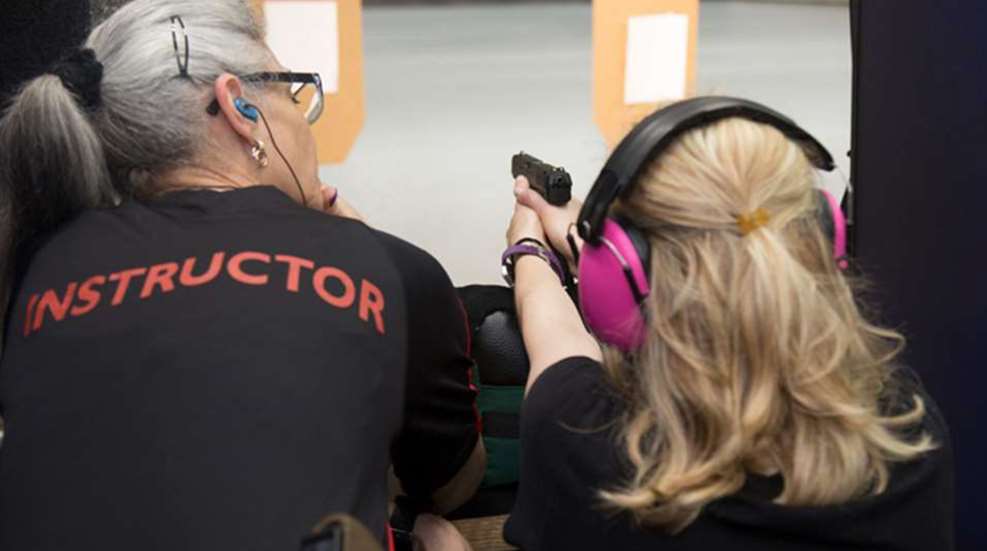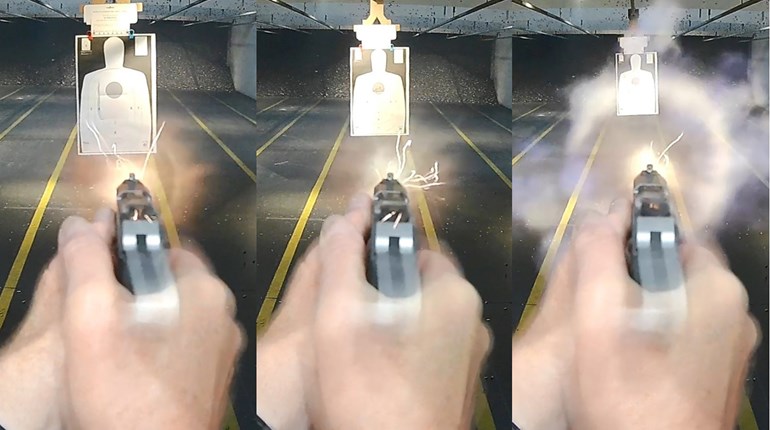
The NRA, as well as the public, considers NRA Firearm Training to be the “Gold Standard” … and rightly so! All the NRA Instructors I know are proud of their title and take their job as instructors seriously. As happens to every generation, time passes you by and before you know it, you are at the age where you are old enough to be your students’ mother or father, or even one of their grandparents!
Each person is at the mercy of Father Time. Yes, even NRA Firearms Instructors. As we age, there are things that we cannot do as well as we could a few years ago. We all slow down, but it is the degree of that slowdown that affects how well we can instruct the younger generation. We all will, at some point, experience decreased strength, mental acuity and stamina. This is just a fact of life!
NRA Instructors are no different. Not only do instructors become physically and mentally compromised, but they can become stuck in a rut. Everything changes; there are advances in technology and equipment, and one has to become familiar with these new trends. Remember, your students are taking your course to learn about all types of firearms and actions, not just the ones you like.
There are ways aging instructors can stay relevant. It might just take changing the way you teach. Small changes can make a big difference in the quality of your class. There are techniques to deal with physical and mental changes, as well as things to avoid being stale that instructors can do. But remember, when all else fails, recruit a teaching partner. If you do not know anyone that is familiar enough with guns to help teach, you can always approach one of your more outstanding students and ask them if they are interested in “team teaching” with you.
Physical Techniques
Many firearm instructors who have been teaching for years usually start to experience back, knee and leg pain. As instructors, you put a lot of wear and tear on your lower extremities, depending on the type of training being offered. Moving between targets, kneeling and shooting from the prone position are activities that firearm instructors must model for their students. Additionally, the weight of a loaded handgun in a holster on your belt adds to the stress on joints and muscles. After a while, your back, knees and legs pay the price in the long run.
When it gets too hard to stand for long periods, many instructors resort to sitting in a chair. Sitting in a chair has several negative effects. First, it just looks unprofessional. Second, you no longer have eye contact with the entire class. You can no longer see who is paying attention and who is not. You also lose the ability to read body language indicating that you have lost a student regarding a specific topic.
If you are experiencing pain in the lower back, knees or legs, consider getting a stool. Use a stool that is just tall enough to sit on while maintaining eye contact with your class. This allows you to maintain eye contact with your students. You also still retain a position of authority and professionalism.
If your vision is getting weak, there are things you can do to help you with teaching on the range. After all, near vision is more important to an instructor than distant vision. Remember, an instructor should pay attention to the shooter and gun while occasionally looking at the target between shots. If your distant vision is getting weak, get a small pair of binoculars or a spotting scope to help with looking at the target between shots.
Shaking, especially in the hands, can become an issue to many older instructors, especially when operating different firearm actions or handling training aids. This can be handled with several techniques. First, utilize your students. Call students up to work the actions or handling training aids while you talk them through it. This is an effective teaching technique. It also benefits your students by allowing them “hands-on” learning. A second technique is to get a smaller caliber firearm with a weaker spring. If working the action of your carry gun is getting difficult, get a .22 caliber. A .22-cal. gun that works the same as a carry gun achieves the same goal.
Mental Techniques
When you age, mental sharpness is always a concern. If you find yourself constantly having to back track in class and cover information on previously discussed topics, you may need help. I am not talking about professional or medical help but simply a pen and paper. Learn the art of notetaking, making lists or outlines. Basically, you are mapping out your lesson on paper.
By making notes or outlines, you can stay focused and on track. This is also beneficial to your students. When you keep jumping around in your lesson, you can confuse your students by breaking their concentration. When you have notes, outlines, and a lesson plan, you can cover the topic thoroughly and have a seamless transition to your next lesson. This makes your class more conducive to learning and when this happens you have properly trained and happy students.
Another technique to help your memory is making name tents for your students. When you call on someone and use their name, it makes it more personable. When you make it more personable, your students feel that you really care about them and not just the money. Name tents are easy to make. Take a piece of paper and fold it in half, then take the folded paper and fold it in half again. Write their name on both sides and you have a name tent.
Keep Up with New Trends
Breaking news to all older firearms instructors: 1911s are not the only semi-automatic out there anymore! Yes, I agree the 1911 platform is great, but let’s face it, it is not the preferred platform for younger audiences. If this describes you, you are stale. Period.
In addition to 1911s, there are double-single action pistols, double-action-only pistols, and striker-fired pistols. It is your job, especially if you are teaching an NRA Basic Pistol class, to teach impartially about all the different handgun actions.
One of the best ways an NRA Instructor, or any other instructor, can stay abreast of the latest trends in firearms is to join the NRA and subscribe to and read one or more of its Official Journals: American Hunter, American Rifleman, Shooting Illustrated, and America’s 1st Freedom. These magazines cover many of the things that a firearms instructor should know. The topics covered in these periodicals also give the instructor the information needed to answer many of the questions raised by students in his or her classes.
Another way to stay current with the newest trends is to spend time in gun stores and go to gun shows. Most firearms instructors will not balk at this suggestion. The problem is many instructors gravitate to the counter or booth of only the guns they prefer. An instructor really wanting to follow the newest trends and advances in firearms must go to the makes, models and actions with which they are unfamiliar.
The students I have had the pleasure of teaching have all been very helpful, regardless of my age.
Whenever I must load or unload items from the classroom to the range and back again such as shooting tables, sandbags and other items necessary to conduct a firearms training class, my students have always offered to help. Just keep in mind that it is alright to get help from your students if they offer, but when you rely on that help, you need to think about changing your techniques.
Unfortunately, there comes a time when you are no longer effective and have to seriously consider retiring or at a minimum, changing the ways you do things. That does not mean you have to stop teaching. Consider team teaching with others or at least stepping down as the lead or “Chief” trainer. Afterall, you probably have a lot of experience and valuable knowledge that can still benefit new and young shooters!














































